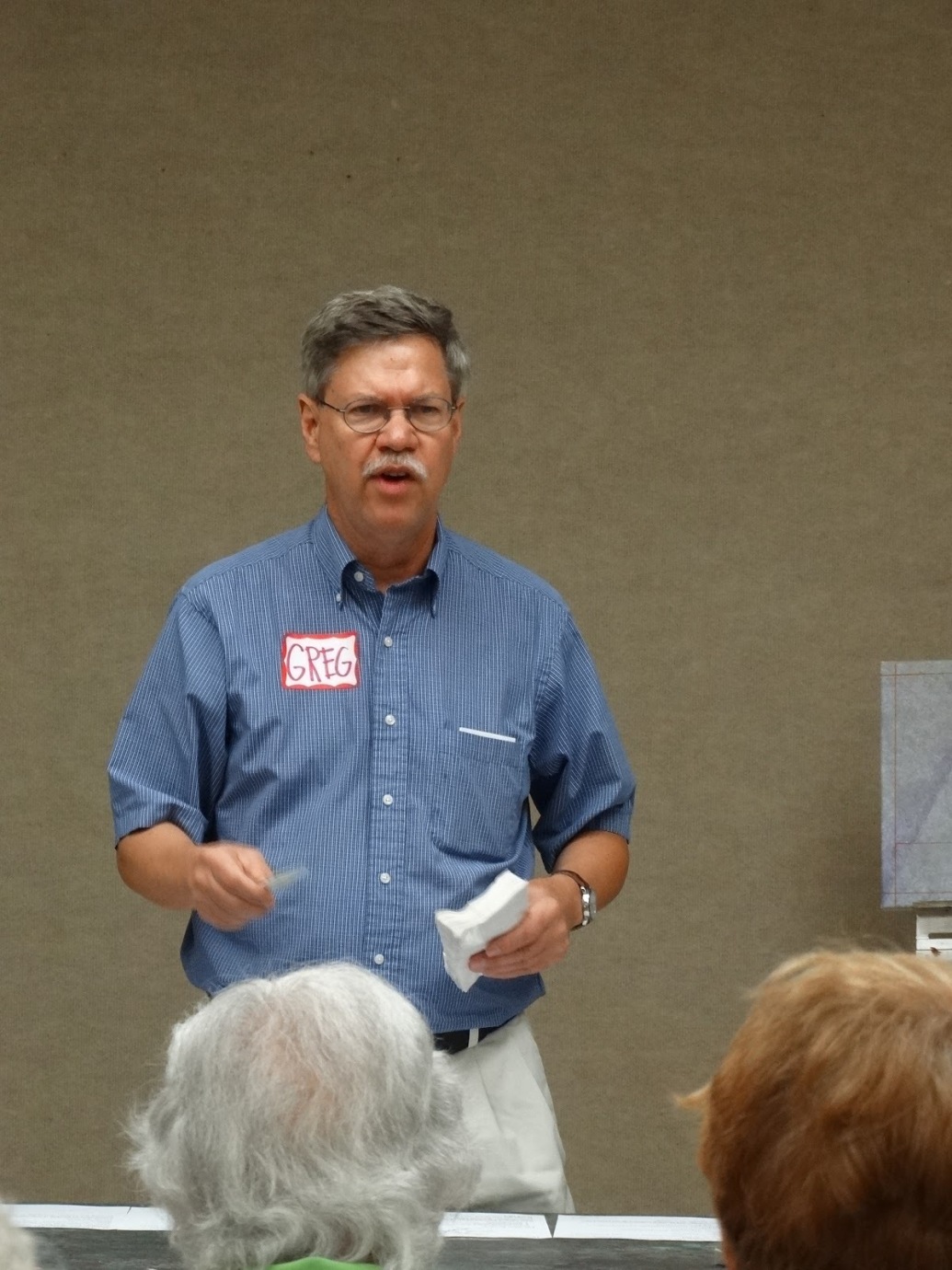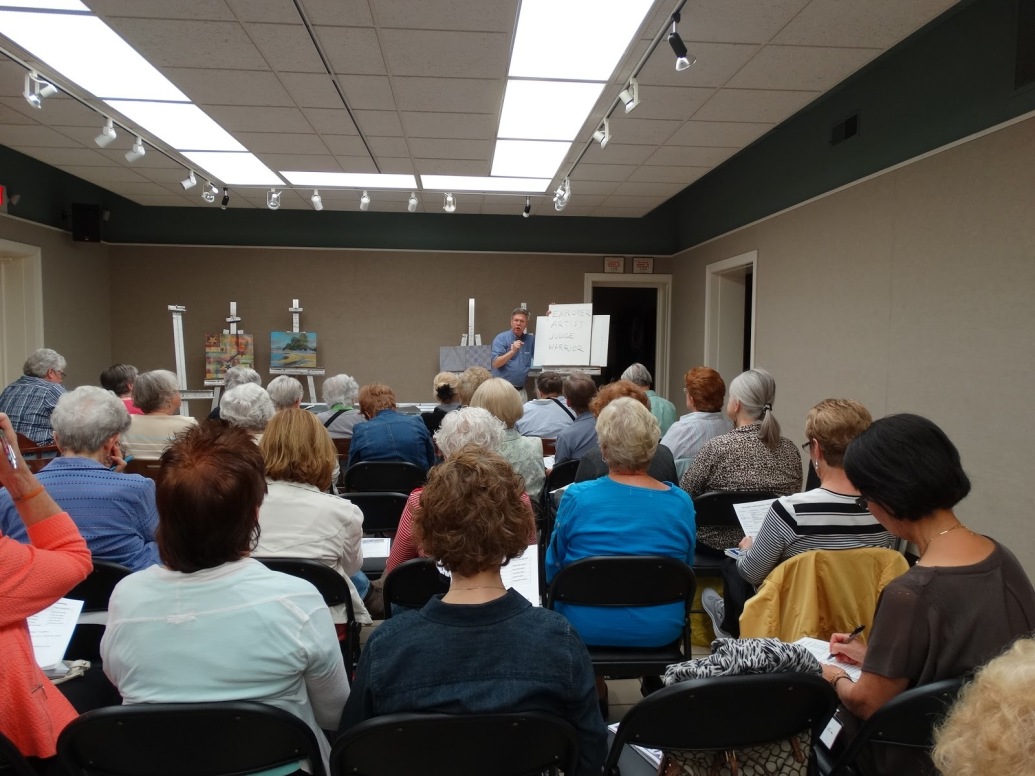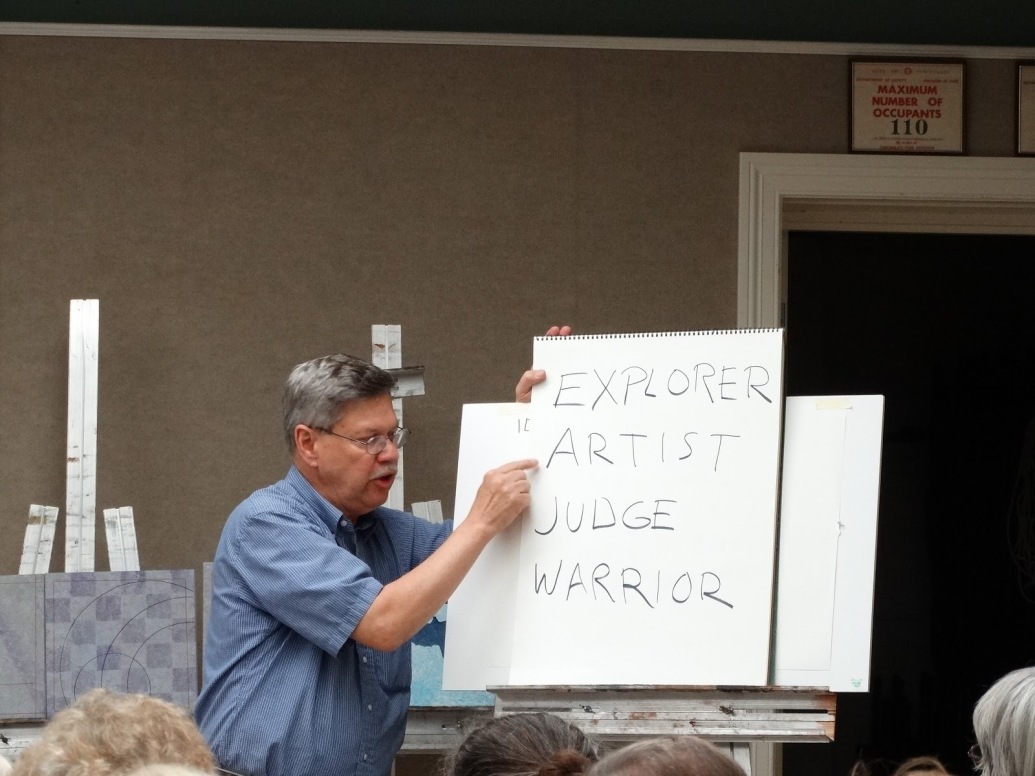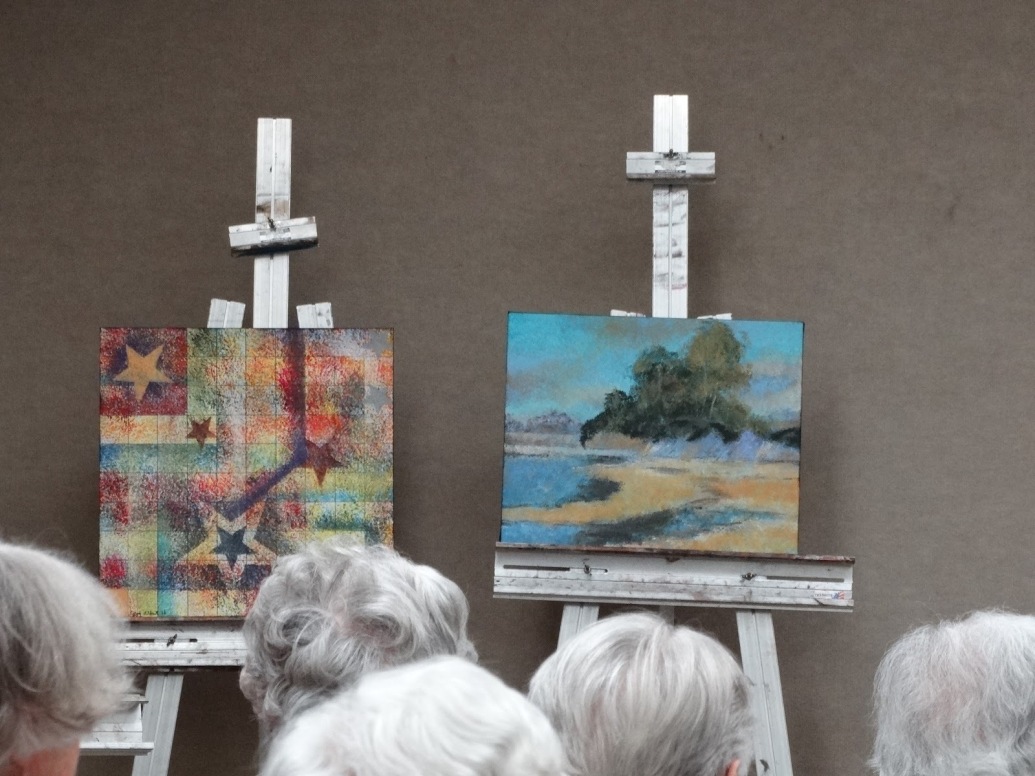PROGRAM - SEPTEMBER, 2017 - GREG ALBERT
Our Program Chair, Claudia Taylor, introduced our September program presenter, Greg Albert. Greg is an artist, teacher, writer and editor. He is a graduate of the Art Academy of Cincinnati and has a Bachelor’s and Master’s degrees in drawing and art history from the University of Montana. He has taught at the Art Academy since 1979, Miami University and Thomas More College. He also had a 17 year career with North Light Books as an Editorial Director. He has judged and juried many local and regional shows
Greg’s presentation for this month centered on the artist’s creative journey, the “hero’s journey”. Greg defines the creative journey as four distinct creative roles in the process.
The first role the artist assumes is the Explorer Role. This is where the hero receives the Call. He identifies the problem, goal or challenge before him. Each artist must decide what the goal is for their work. Is it to make more art, do something different, do something better or generally push boundaries. Gary suggests defining your goal in writing. He advocates using note cards to capture spontaneous ideas that we come up with during our daily routine. These ideas can then be catalogued or filed for future reference.
The next role for the artist to fill is the Artist Role. It is this point where the artist takes the raw input of the creative search or exploration and decides how to act on it. This is also known as the hero’s journey. This is the point that the artist brainstorms about the options available to make the project happen. There are no decisions, no bad ideas. This is the time to examine all of the possibilities, all of the directions one could pursue. Greg states that an artist needs to put themselves into the environment in which they hope to find inspiration. One can’t create in a sterile vacuum. Put yourself into a stimulus-rich environment. Take input from everywhere. No source is to be overlooked. Greg suggests putting together an idea tree, where upon you can identify the Who, What, Where, Why, How and When of the project.
Now that the artist has all of the options available to them, they now need to step into the Judge Role. With every possibility in play, the artist must go through the selection process. They go through analysis and selection to identify the best and most productive direction to execute the project. For the hero, this is the test. This is the personal touch, the subjective desire to follow the dream. Until a decision is made for the project one can’t take it into delivery. Just because a direction is chosen, doesn’t mean that you can’t consider the same project in a different way. The same subject or concept can be done multiple ways, but for the moment, a decision needs to be made in how to proceed.
Finally, with the project explored, studied, decided, the artist needs to assume the Warrior Role. This is when you need to make the project happen. The artist goes into worker mode and combines their personal skills with effort to produce the project. Greg points out that this is the hardest part. One’s personal skill set defines their ability to realize the dream. Certainly, this is where experience allows one to complete their tasks with more credibility and success. It’s all part of the journey. One must put in the time and effort to learn their craft, which will produce results over time. For the hero, this is the battle.
Having completed his review of the creative journey, Greg discussed the elements that often keep us from getting where we want with our art. The first “stopper” is fear. Greg lists fear of:
· Failure
· What others think
· Wasting time or resources
· Frustration
· Being vulnerable or looking foolish
· Confronting personal feelings of self worth
· Negative criticism
Greg also talked about personal baggage that might be keeping one from moving forward to success. He says the inner critic, voice of doubt can keep us from being confident. These negative thoughts can come from a variety of sources. The trick is to recognize them and overcome them with practice and perseverance.
Then Greg talked about the influence of other people making demands on your time and resources. One needs to make time to create space for your art that can be kept separate from other areas of your life. If one can create a balance between art and their lives, it is easier to attain success in both.
Greg challenged us to break from conventional thinking. He said that we can often find new approaches to our creativity by changing perspective. Go big, expand options, get away from the norm. He cautioned that all of this should be processed within the context of understanding the rules and limitations of the medium. Knowing the craft allows one greater freedom to grow. He says that sometimes keeping a focus keeps one from being too aimless. Stress is always part of the process and can be productive. Greg says that eliminating distractions, disorganization, lack of preparation, etc. will channel your creativity more productively.
Greg says that managing the time/space/money equations is important. Find more time. Make a dedicated space to create. Apply more money or resources to your creative activities. These will help you reach your goals for your art.
Some of Greg’s tips for enhancing creativity are:
· Just do it
· Overcome fear
· Have a playful attitude
· Be childlike
· Keep an open mind
· Practice, practice, practice
· Keep humor and laughter with you
· Give yourself permission to fail
· Challenge your belief systems
· Create a regular habit or schedule
· One idea leads to other ideas
· Success breeds confidence
Greg recommends a few books for further reading, such as,
The Artist Way – Julia Cameron
Hero of a Thousand Faces – Joseph Campbell
Roger von Oech – A Kick in the Seat of Your Pants
Greg concluded his program with a review and critique of Club member paintings.
Our next Greater Cincinnati Watercolor Society meeting will be on October 4th, where we will explore color with Nita Leland. See you then.
Submitted by Tom Schroeder, Secretary, Greater Cincinnati Watercolor Society, September 2017.





